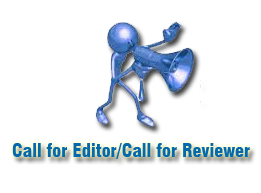- Focus and Scope
- Section Policies
- Peer Review Process
- Publication Frequency
- Open Access Policy
- Archiving
- Publication Ethics
- Retraction
- Publication Frequency
- Author Fees
- Plagiarism Policy
- Copyright Notice
Focus and Scope
Hipotenusa: Journal of Mathematical Society, an electronic journal, provides a forum for publishing the original research articles, review articles from contributors, and the novel technology news related to mathematics education and mathematical modelling. This journal is provided for writers, teachers, students, professors, and researchers, who will publish their research reports or their literature review articles (only for invited contributors) about mathematics education and its instructional. Start from December 2019, this journal publishes two times a year, in June and December. Besides regular writers, for each volume, the contents will be contributed by invited contributors who experts in mathematics education either from Indonesia or abroad.
Hipotenusa focuses on publishing articles resulting from field research on the development of mathematics learning tools and mathematical modeling. The development of learning tools studied can take the form of developing learning plans, teaching materials, assessment instruments, and technology or learning media. Hipotenusa also publishes scientific articles about mathematical modeling which can be a form of realistic mathematics in the field.
Section Policies
Articles
Peer Review Process
Hipotenusa is scientific, peer-reviewed and open access journal published by IAIN Salatiga in collaboration with ADSMAPETA & APSMAPETA. The manuscript will be sent to at least two anonymous referees for contribution, originality, relevance, and presentation (double-blind review). Reviewers' comments are then sent to the corresponding author for necessary actions and responses. The Editor shall inform you of the results of the review as soon as possible, hopefully in 30 to 60 days. The submitted manuscript is first reviewed by an editor. It will be evaluated in the office, whether it is suitable for the JPM focus and scope or has a major methodological flaw and similarity score.
The accepted research articles will be available online (free download) following the journal peer-reviewing process. The final decision of articles acceptance will be made by Editors according to Reviewers comments. Plagiarism detection of articles in this journal is carried out by using ithenticate.com (Web Checker). The journal is carried out by using Mendeley as a Tool Reference Manager. The language used in this journal is English and Indonesian.
All articles published Open Access will be immediately and permanently free for everyone to read and download. We are continuously working with our author communities to select the best choice of license options, currently being defined for this journal as Creative Commons Attribution (CC-BY-SA).
Publication Frequency
Open Access Policy
This journal provides immediate open access to its content on the principle that making research freely available to the public supports a greater global exchange of knowledge.
Archiving
This journal utilizes the LOCKSS system to create a distributed archiving system among participating libraries and permits those libraries to create permanent archives of the journal for purposes of preservation and restoration. More...
Publication Ethics
Publication Ethics and Publication Malpractice Statement
This statement clarifies ethical behavior of all parties involved in the act of publishing an article in our journals, including the authors, the editors, the peer-reviewers and the publisher, namely Program Studi Tadris Matematika IAIN Salatiga, and Asosiasi Dosen Matematika PTKIN (ADMAPETA).
Section A: Publication and authorship
- All submitted papers are subject to strict peer-review process by at least two International Reviewers that are experts in the area of the particular paper.
- Review processes are blind peer review.
- The factors taken into account in the review are relevance, soundness, significance, originality, readability, and language.
- The possible decisions include acceptance, acceptance with revisions, or rejection.
- If authors are encouraged to revise and resubmit a submission, there is no guarantee that the revised submission will be accepted.
- Rejected articles will not be re-reviewed.
- The paper acceptance is constrained by such legal requirements as shall then be in force regarding libel, copyright infringement, and plagiarism.
- No research can be included in more than one publication.
Section B: Authors’ responsibilities
- Authors must certify that their manuscripts are their original work.
- Authors must certify that the manuscript has not previously been published elsewhere.
- Authors must certify that the manuscript is not currently being considered for publication elsewhere.
- Authors must participate in the peer review process.
- Authors are obliged to provide retractions or corrections of mistakes.
- All Authors mentioned in the paper must have significantly contributed to the research.
- Authors must state that all data in the paper are real and authentic.
- Authors must notify the Editors of any conflicts of interest.
- Authors must identify all sources used in the creation of their manuscript.
- Authors must report any errors they discover in their published paper to the Editors.
Section C: Reviewers’ responsibilities
- Reviewers should keep all information regarding papers confidential and treat them as privileged information.
- Reviews should be conducted objectively, with no personal criticism of the author
- Reviewers should express their views clearly with supporting arguments
- Reviewers should identify relevant published work that has not been cited by the authors.
- Reviewers should also call to the Editor in Chief’s attention any substantial similarity or overlap between the manuscript under consideration and any other published paper of which they have personal knowledge.
- Reviewers should not review manuscripts in which they have conflicts of interest resulting from competitive, collaborative, or other relationships or connections with any of the authors, companies, or institutions connected to the papers.
Section D: Editors’ responsibilities
- Editors have complete responsibility and authority to reject/accept an article.
- Editors are responsible for the contents and overall quality of the publication.
- Editors should always consider the needs of the authors and the readers when attempting to improve the publication.
- Editors should guarantee the quality of the papers and the integrity of the academic record.
- Editors should publish errata pages or make corrections when needed.
- Editors should have a clear picture of a research’s funding sources.
- Editors should base their decisions solely on the papers’ importance, originality, clarity, and relevance to publication’s scope.
- Editors should not reverse their decisions nor overturn the ones of previous editors without serious reason.
- Editors should preserve the anonymity of reviewers.
- Editors should ensure that all research material they publish conforms to internationally accepted ethical guidelines.
- Editors should only accept a paper when reasonably certain.
- Editors should act if they suspect misconduct, whether a paper is published or unpublished, and make all reasonable attempts to persist in obtaining a resolution to the problem.
- Editors should not reject papers based on suspicions; they should have proof of misconduct.
- Editors should not allow any conflicts of interest between staff, authors, reviewers and board members.
Retraction
Retraction
The papers published in the Hipotenusa: Journal of Mathematical Society will be consider to retract in the publication if:
- They have clear evidence that the findings are unreliable, either as a result of misconduct (e.g. data fabri-cation) or honest error (e.g. miscalculation or experimental error).
- The findings have previously been published elsewhere without proper crossreferencing and permission orjustification (i.e. cases of redundant publication).
- It constitutes plagiarism.
- It reports unethical research.
The mechanism of retraction follow the Retraction Guidelines of Committee on Publication Ethics (COPE) which can be accessed at https://publicationethics.org.
Publication Frequency
Hipotenusa: Journal of Mathematical Society (p-ISSN: on process; e-ISSN: 2716-3156) is a scientific, peer-reviewed and open-access journal which has been established for the dissemination of state-of-the-art knowledge in the field of mathematics education. This journal managed and published by Department of Mathematics Education, Faculty of Teacher Training and Education, IAIN Salatiga, Salatiga, Indonesia in collaboration with ADSMAPETA (Asosiasi Dosen Matematika PTKIN) and APSMAPETA (Asosisasi Program Studi Matematika PTKIN), biannually in June and December.
Author Fees
Author Fees
Hipotenusa is an open access journal. To increase the quality of articles at Hipotenusa, Since June 2024 this journal charges the following author fees.
Article Publishing Charges (APCs): $100 (USD) or Rp 1.600.000 (IDR)
The fee for publication of an original paper in this journal is Rp 1.600.000 (IDR) (for Indonesian author) & $100 (for Foreign author). If the paper is accepted for publication, you will be asked to fill out and send a Statement of originality along with your digital signature and you will be asked to pay the fee. This fee includes the proofreading cost/fee of the manuscript.
Accepted manuscripts WILL NOT BE PUBLISHED until payment has been received.
*Please email your copy of the publication fee deposit slip to: jurnalhipotenusa@uainsalatiga.ac.id
Plagiarism Policy
- Regardless of the source of the copied text or idea.
- Regardless of whether the author(s) of the text or idea which you have copied actually copied that text or idea from another source.
- Regardless of whether or not the authorship of the text or idea which you copy is known
- Regardless of the nature of your text (journal paper/article, web page, book chapter, paper submitted for a college course, etc) into which you copy the text or idea
- Regardless of whether or not the author of the source of the copied material gives permission for the material to be copied; and
- Regardless of whether you are or are not the author of the source of the copied text or idea (self-plagiarism).
Mathematics Education Department, State Institute for Islamic Studies (IAIN) Salatiga, Indonesia (e-ISSN: 2716-3156).
In the aim of improving the quality of the Journal since 19th October 2019 this journal officially had made cooperation with ADMAPETA (The association of Teachers of Mathematics Education). See The MoU Manuscript.
Copyright Notice
COPYRIGHT NOTICE
HIPOTENUSA JOURNAL OF MATHEMATICAL SOCIETY: http://hipotenusa.iainsalatiga.ac.id/ is licensed under a Creative Commons Attribution-ShareAlike 4.0 International License
An author who publishes in HIPOTENUSA JOURNAL OF MATHEMATICA SOCIETY agrees to the following terms:
- Author retains the copyright and grants the journal the right of first publication of the work simultaneously licensed under the Creative Commons Attribution-ShareAlike 4.0 License that allows others to share the work with an acknowledgment of the work's authorship and initial publication in this journal
- The author is able to enter into separate, additional contractual arrangements for the non-exclusive distribution of the journal's published version of the work (e.g., post it to an institutional repository or publish it in a book) with the acknowledgment of its initial publication in this journal.
- The author is permitted and encouraged to post his/her work online (e.g., in institutional repositories or on their website) prior to and during the submission process, as it can lead to productive exchanges, as well as earlier and greater citation of the published work (See The Effect of Open Access).
Privacy Statement
The names and email addresses entered in this journal site will be used exclusively for the stated purposes of this journal and will not be made available for any other purpose or to any other party.
Department of Mathematics Education, Faculty of Teacher Training and Education, IAIN Salatiga, Salatiga, Indonesia. e-ISSN: 2716-3156 (Online)






